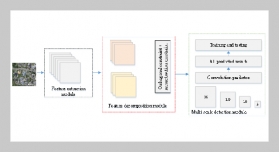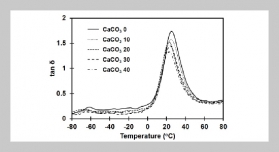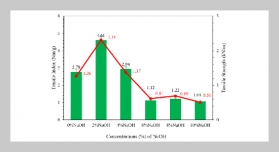REFERENCES
- [1] Montgomery, D. C., Bazaraa, M. S. and Keswani, A. K., “Inventory Models with a Mixture of Backorders and Lost Sales,” Naval Research Logistics, Vol. 20, pp. 255263 (1973). doi: 10.1002/nav.3800200205
- [2] Ouyang, L. Y., Yeh, N. C. and Wu, K. S., “Mixture Inventory Model with Backorders and Lost Sales for Variable Lead Time,” Journal of the Operational Research Society, Vol. 47, pp. 829832 (1996). doi: 10.2307/3010290
- [3] Ouyang, L. Y. and Wu, K. S., “A Minimax Distribution Free Procedure for Mixed Inventory Model with Variable Lead Time,” International Journal of Production Economics, Vol. 5657, pp. 511516 (1998). doi: 10.1016/S0925-5273(97)00068-6
- [4] Moon, I. and Choi, S., “A Note on Lead Time and Distributional Assumptions in Continuous Review Inventory Models,” Computers & Operations Research, Vol. 25, No. 11, pp. 10071012 (1998). doi: 10.1016/ S0305-0548(97)00103-2
- [5] Hariga, M. and Ben-Daya, M., “Some Stochastic Inventory Models with Deterministic Variable Lead Time,” European Journal of Operational Research, Vol. 113, pp. 4251 (1999). doi: 10.1016/S0377-2217 (97)00441-4
- [6] Ouyang, L. Y., Chen, C. K. and Chang, H. C., “Lead Time and Ordering Cost Reductions in Continuous Review Inventory Systems with Partial Backorders,” Journal of the Operational Research Society, Vol. 50, pp. 12721279 (1999). doi: 10.2307/3010637
- [7] Ouyang, L. Y. and Chang, H. C., “The Effects of Investing in Lost Sales Reduction on the Stochastic Inventory Models,” Journal of Information & Optimization Science, Vol. 22, pp. 357368 (2001). doi: 10. 1080/02522667.2001.10699497
- [8] Ouyang, L. Y., Chuang, B. R. and Lin, Y. J., “Periodic Review Inventory Models with Controllable Lead Time and Lost Sales Rate Reduction,” Journal of the Chinese Institute of Industrial Engineers, Vol. 22, No. 5, pp. 355368 (2005). doi: 10.1080/101706605095 09305
- [9] Ouyang, L. Y., Chuang, B. R. and Lin, Y. J., “Effective Investment to Reduce Lost-Sales Rate in a Periodic Review Inventory Model,” OR Spectrum, Vol. 29, pp. 681697 (2007). doi: 10.1007/s00291-007-0081-8
- [10] Rosenblatt, M. J. and Lee, H. L., “Economic Production Cycles with Imperfect Production Processes,” IIE Transactions, Vol. 18, No. 1, pp. 4855 (1986). doi: 10.1080/07408178608975329
- [11] Porteus, E. L., “Optimal Lot Sizing, Process Quality Improvement and Setup Cost Reduction,” Operations Research, Vol. 34, No. 1, pp. 137144 (1986). doi: 10.1287/opre.34.1.137
- [12] Paknejad, M. J., Nasri, F. and Affisco, J. F., “Defective Units in a Continuous Review (s, Q) System,” International Journal of Production Research, Vol. 33, pp. 27672777 (1995). doi: 10.1080/00207549508904844
- [13] Wu, K. S. and Ouyang, L. Y., “(Q, r, L) Inventory Model with Defective Items,” Computers & Industrial Engineering, Vol. 39, pp. 173185 (2001). doi: 10. 1016/S0360-8352(00)00077-2
- [14] Salameh, M. K. and Jaber, M. Y., “Economic Production Quantity Model for Items with Imperfect Quality,” International Journal of Production Economics, Vol. 64, No. 1, pp. 5964 (2000). doi: 10.1016/S0925-5273 (99)00044-4
- [15] Ouyang, L. Y. and Chang, H. C., “Impact of Investing in Quality Improvement on (Q, r, L) Model Involving the Imperfect Production Process,” Production Planning & Control, Vol. 11, pp. 598607 (2000). doi: 10.1080/095372800414160
- [16] Papachristos, S. and Konstantaras, I., “Economic Ordering Quantity Models for Items with Imperfect Quality,” International Journal of Production Economics, Vol. 100, No. 1, pp. 148154 (2006). doi: 10.1016/j.ijpe.2004.11.004
- [17] Eroglu, A. and Ozdemir, G., “An Economic Order Quantity Model with Defective Items and Shortages,” International Journal of Production Economics, Vol. 106, pp. 544549 (2007). doi: 10.1016/j.ijpe.2006. 06.015
- [18] Wee, H. H., Yu, J. and Chen, M. C., “Optimal Inventory Model for Items with Imperfect Quality and Shortage Backordering,” Omega, Vol. 35, pp. 711 (2007). doi: 10.1016/j.omega.2005.01.019
- [19] Yoo, S. H., Kim, D. and Park, M. S., “Economic Production Quantity Model with Imperfect-Quality Items, Two-Way Imperfect Inspection and Sales Return,” International Journal of Production Economics, Vol 121, pp. 255265 (2009). doi: 10.1016/j.ijpe.2009.05. 008
- [20] Annadurai, K. and Uthayakumar, R., “Controlling Setup Cost (Q,r,L) Inventory Model with Defective Items,” Applied Mathematical Modelling, Vol. 34, pp. 14181427 (2010). doi: 10.1016/j.apm.2009.04.010
- [21] Sana, S. S., “An Economic Production Lot Size Model in an Imperfect Production System,” European Journal of Operational Research, Vol. 201, pp. 158170 (2010). doi: 10.1016/j.ejor.2009.02.027
- [22] Roy, M. S., Sana, S. S. and Chaudhuri, K., “An Economic Order Quantity Model of Imperfect Quality Items with Partial Backlogging,” International Journal of Systems Science, Vol. 42, No. 8, pp. 14091419 (2011). doi: 10.1080/00207720903576498
- [23] Lin, Y. J., Ouyang, L. Y. and Dang, Y. F., “A Joint Optimal Ordering and Delivery Policy for an Integrated Supplier-Retailer Inventory Model with Trade Credit and Defective Items,” Applied Mathematics and Computation, Vol. 218, pp. 74987514 (2012). doi: 10. 1016/j.amc.2012.01.016
- [24] Lin, H. J., “An Integrated Supply Chain Inventory Model with Imperfect-Quality Items, Controllable Lead Time and Distribution-Free Demand,” Yugoslav Journal of Operations Research, Vol. 23, No. 1, pp. 87 109 (2013). doi: 10.2298/YJOR110506019L
- [25] Lin, H. J. and Lin, Y. J., “Supply Chain Coordination with Defective Items and Quantity Discount,” International Journal of Systems Science, pp. 110 (2013). doi:10.1080/00207721.2013.773468
- [26] Liao, C. J. and Shyu, C. H., “An Analytical Determination of Lead Time with Normal Demand,” International Journal of Operations & Production Management, Vol. 11, No. 9, pp. 7278 (1991). doi: 10. 1108/EUM0000000001287
- [27] Scarf, H., “A Min-Max Solution of an Inventory Problem,” In: Arrow K, Karlin S, Scarf H, editors. The Mathematical Theory of Inventory and Production; Stanford CA: Stanford University Press, pp. 201209 (1958).
- [28] Gallego, G. and Moon, I., “The Distribution Free Newsboy Problem: Review and Extensions,” Journal of the Operational Research Society, Vol. 44, No. 8, pp. 825834 (1993). doi: 10.2307/2583894
- [29] Hall, R. W., Zero Inventories, Illinois Dow Jones Irwin, Homewood (1983).
- [30] Porteus, E. L., “Investing in Reduced Setups in the EOQ Model,” Management Science, Vol. 31, pp. 998 1010 (1985). doi: 10.1287/mnsc.31.8.998
- [31] Nasri, F., Affisco, J. F. and Paknejad, M. J., “Setup Cost Reduction in an Inventory Model with FiniteRange Stochastic Lead Times,” International Journal of Production Research, Vol. 28, pp. 199212 (1990). doi: 10.1080/00207549008942693
- [32] Shore, H., “General Approximate Solutions for Some Common Inventory Models,” Journal of the Operational Research Society, Vol. 37, pp. 619629 (1986). doi: 10.2307/2582588









